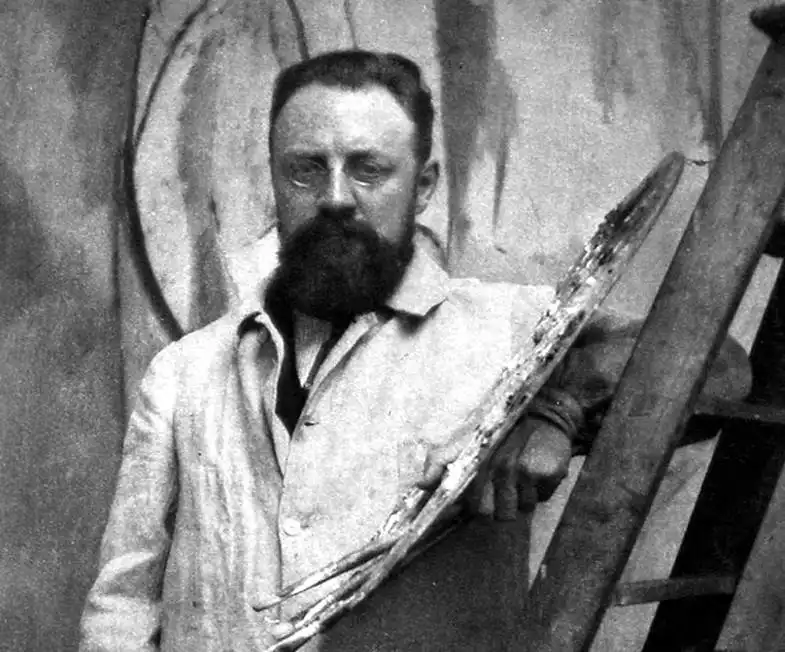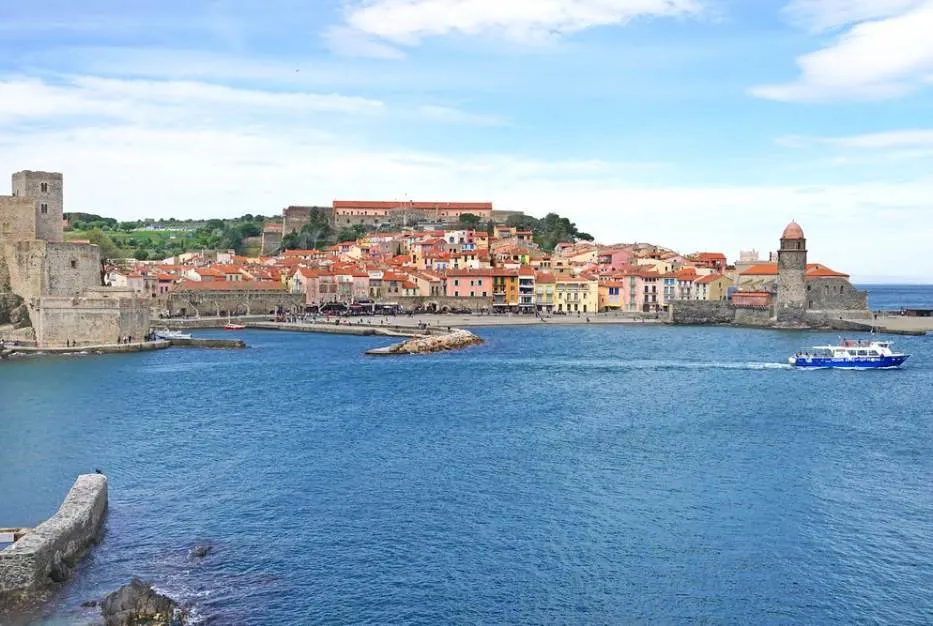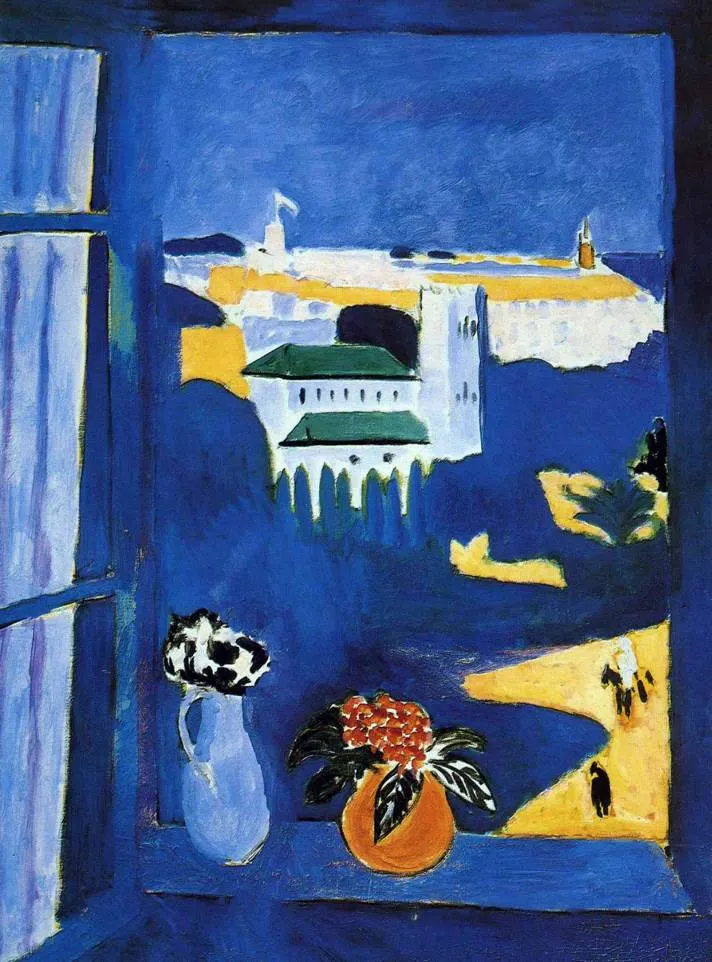The first decade of the 20th century was an exciting time in the history of art. For decades, the foundation of modern art had been laid and it finally came to fruition.
Many Avant-Garde artists stepped up a gear to produce some of their most famous works, including Henri Matisse (1869-1954).
The French artist started experimenting with bright colors and formed a group with like-minded painters known as the “Fauves” or “Wild Beasts.”
In this article, you’ll discover some of the most interesting facts about Open Window, Collioure, one of the most notable paintings by Matisse from this period.
1. It was completed at the start of the Fauvism movement
Henri Matisse was one of the founders of the Fauvism art movement, a group of artists who started exhibiting their paintings at the Salon d’Automne of 1905.
The bright and colorful paintings of the group, which also included André Derain and Maurice de Vlaminck, were received with disdain at the event.
Art critic Louis Vauxcelles, a man who also coined the term Cubism, referred to the artists as “Wild Beasts,” something that might have been inspired by Henri Rousseau’s painting “The Hungry Lion Throws Itself on the Antelope” which hung nearby.
The style itself emerged around 1904 and was used until the outbreak of World War I. The group only exhibited 3 times between 1905 and 1908.
Open Window, Collioure, a work that is also known as “The Open Window,” is a Fauvism painting that was completed in 1905.

2. It depicts the view from an apartment in a small town in southern France

Matisse was born in 1869 which means that he was already in his early 30s at the turn of the century. He did, however, not manage to find his true artistic style during the early phase of his career.
He studied under William-Adolphe Bouguereau (1825-1905) at the Académie Julian in Paris but disliked the academic approach to painting.
He met a lot of colleagues during the final decade of the 19th century and was especially impressed with the pointillist technique used by Paul Signac.
This style was devised by Georges Seurat (1859-1891) in the early 1880s and Matisse completed several pointillist paintings between 1898 and 1901.
He met André Derain and both started experimenting with bright colors during a trip to the Mediterranean in 1905.
This painting depicts the view of the apartment he rented in Collioure, a small town in the Pyrénées-Orientales Department in the utmost southern part of France.

3. The artist used color to create the illusion of space and depth
What’s remarkable about Open Window, Collioure is that the artist’s experiment with bright colors radically transformed the course of modern art.
He deliberately refrained from using chiaroscuro to create a sense of depth because, well, the vivid color palette he used simply didn’t allow it.
Instead, he applied different fields of color to the interior wall, more specifically, the opposite colors blue-green and fuchsia.
He then repeated this contrasting color scheme in several other spots in the painting to both add volume and create depth.

4. Matisse used different types of brushstrokes in various parts of the painting
The artist’s use of bright colors isn’t the only reason why this painting was so revolutionary at the time.
Matisse incorporated a large number of different types of brushstrokes, ranging from relatively small ones to huge, thickly applied, and visible brushstrokes.
He purposely applied different brushstrokes to different areas such as the interior wall, the balcony, the shutters of the window, the harbor and sailing boats, and the distant landscape.

5. It wasn’t the only time that he depicted an open window in his career
Although Matisse produced a wide range of different types of paintings and sculptures during his long career, open windows seem to particularly have fascinated the French master.
He traveled frequently and this allowed him to produce paintings that depict the view outside of the places he stayed from multiple angles.
Some of the most notable examples of paintings that feature open windows are:
- A Glimpse of Notre Dame in the Late Afternoon (1902) – Buffalo AKG Art Museum
- The Conversation (1911) – The Hermitage in Saint Petersburg
- Window at Tangier (1911–1912) – The Pushkin Museum of Fine Arts in Moscow
- The Blue Window (1913) – Museum of Modern Art in New York City
- The Music Lesson (1917) – Barnes Foundation in Philadelphia

6. Matisse completed one of his ultimate masterpieces shortly after
Henri Matisse didn’t care about the public outrage following the first exhibition of the Fauvism artists at the Salon d’Automne in Paris in 1905.
He continued to develop his style that integrated an abundance of bright and distorted colors.
If there’s one painting that defines the Fauvism movement then it’s definitely the monumental work he started painting shortly after he had completed Open Window, Collioure.
It’s titled “Le bonheur de Vivre” or “The Joy of Life” and is one of the major attractions at the Barnes Foundation in Philadelphia and one of the pillars of Modern Art.

7. How big is Open Window, Collioure by Henri Matisse?
While one of his ultimate masterpieces, Le Bonheur de Vivre, is pretty large with dimensions of 176.5 × 240.7 centimeters (69.5 × 94.75 inches), the same can’t be said about the painting described in this article.
Open Window, Collioure by Henri Matisse is a relatively small oil on canvas painting that has dimensions of 55.3 × 46 centimeters (21.25 × 18.12 inches).
8. Where is the painting located today?
The painting remained in France until it was jointly acquired by two New York City-based art galleries called the Carstairs Gallery and Sidney Janis Gallery in 1949.
From here, The Open Window was purchased by Mrs. John Hay Whitney and eventually donated to the National Gallery of Art in Washington D.C. in 1998.
Today, the painting is still part of the collection of the NGA, one of the most popular museums in the country.

